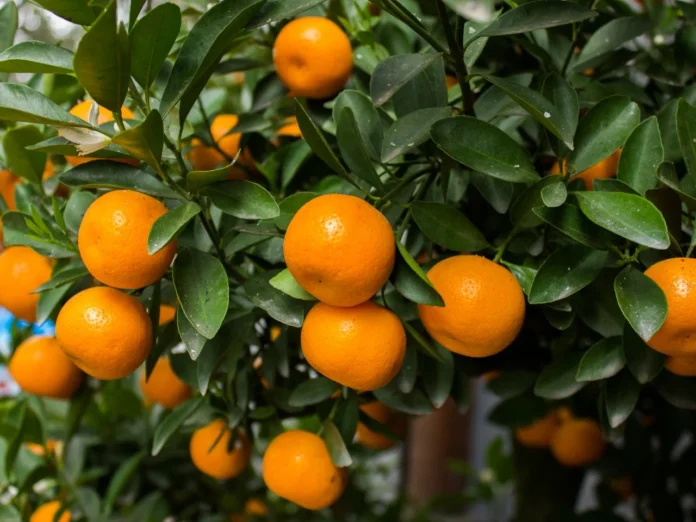The Satsuma is a variety of seedless mandarin orange, well known for its sweet and juicy flavor, making it a favorite among citrus lovers. It is especially popular in Japan, but it is also cultivated in other parts of the world, including the United States, particularly in the southeastern states like Florida and California.
Interesting Facts About Satsuma:
- Origin: Satsuma mandarins were first cultivated in the Satsuma region (now part of Kagoshima Prefecture) in Japan during the 18th century. They are believed to be descendants of a hybrid between mandarin oranges and pomelos. Their exact origin is a subject of debate, with some suggesting Chinese roots, but their prominence in Japanese culture is indisputable
- Hybrid Nature: Satsumas are a hybrid variety of mandarin oranges (Citrus reticulata) and pomelos (Citrus maxima). This hybridization is thought to combine the sweetness and small size of mandarins with the aromatic elements of pomelos
- Cold Hardiness: Satsuma mandarins are known for their cold tolerance. Mature trees can survive temperatures as low as -9°C (15°F) to -11°C (12°F) for a short period. This makes them more resilient than many other citrus varieties, except kumquats
- Historical Freezes: Satsuma groves in the southeastern United States were significantly impacted by a severe cold snap in 1911, with temperatures dropping to -13.3°C (8.1°F). This event caused major damage to the satsuma industry in regions like Florida and Alabama
- Owari: The weight of a Satsuma mandarin can vary based on the specific cultivar and growing conditions. On average, Satsuma mandarins typically weigh around 100–130 grams. However, the largest varieties, such as ‘Owari,’ have been known to reach weights up to 150 grams or more
- Sweetness: Known for their sweetness, Satsuma mandarins are prized for having the least acidic flavor of any citrus fruit. Their natural sugar content is high, which contributes to their honey-like sweetness with only a mild tartness, making them ideal for those who prefer a sweeter citrus flavor
- Seedless: One of the most appealing features of Satsuma mandarins is their typically seedless nature, which makes them easy and enjoyable to eat. Occasionally, a few small cream-colored seeds may appear, but they are rare and don’t detract from the fruit’s popularity
- Easy to Peel: Satsumas have loose, bumpy skin that is incredibly easy to peel. This ease of peeling has made them a favorite choice for children and adults alike, as they do not require cutting tools, unlike other citrus fruits such as oranges
- Juicy: These mandarins are extremely juicy, with a fleshy interior that is perfect for snacking or incorporating into dishes. Their high juice content also makes them excellent for juicing or adding to smoothies and fruit salads
- Low in Calories: A large Satsuma mandarin contains just 64 calories, making it a low-calorie fruit. It’s a great option for those looking to enjoy a sweet, refreshing snack without consuming too many calories
- High Vitamin C: These mandarins are an excellent source of Vitamin C, with a single fruit providing about 36% of the recommended daily intake. This makes them an effective immune booster, particularly in winter when fresh citrus fruits are more commonly consumed
- Fragrant Peel: The zest of the Satsuma mandarin is highly aromatic, filled with fragrant essential oils. This zest can be used in culinary applications, such as flavoring marinades, sauces, or baked goods
- Canned Versions: Satsuma mandarins are often used in canned mandarin oranges due to their soft and juicy texture. This is why canned mandarin oranges typically have a higher likelihood of being Satsuma mandarins
- Famous Varieties: Among the Satsuma varieties, some of the most popular include “Shiranui,” which is known for its rich flavor and ease of peeling, and “Dekopon,” a hybrid variety that combines Satsuma with other citrus species
- Fruit Size: Satsuma mandarins are typically small to medium-sized, about 3 to 4 inches in diameter. They are generally smaller than standard oranges but have a dense, flavorful interior
- Global Spread: While originally from Japan, Satsumas are now widely grown in other regions with subtropical and temperate climates, including parts of the United States, Australia, and South Africa. They have become an international favorite due to their delicious taste and ease of consumption
